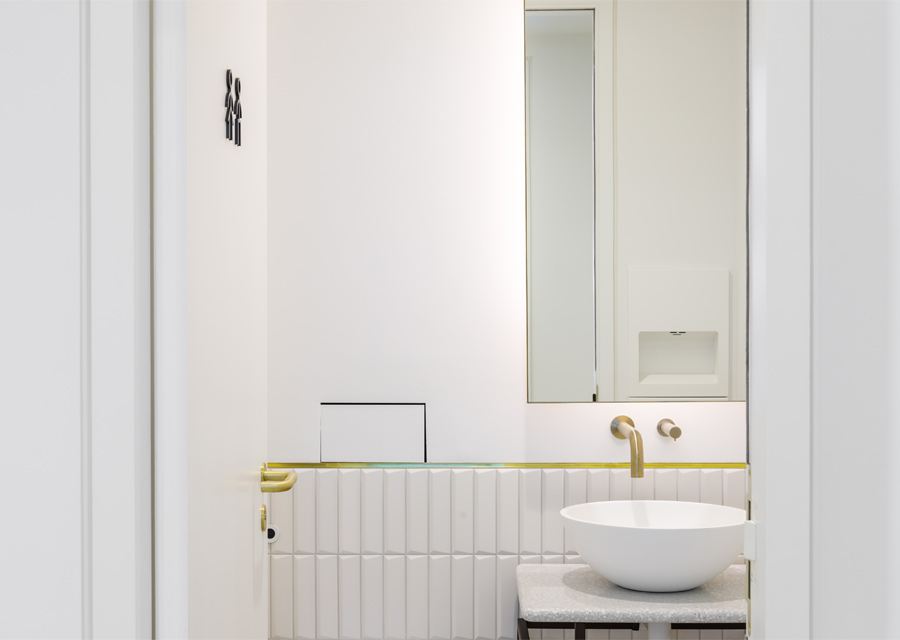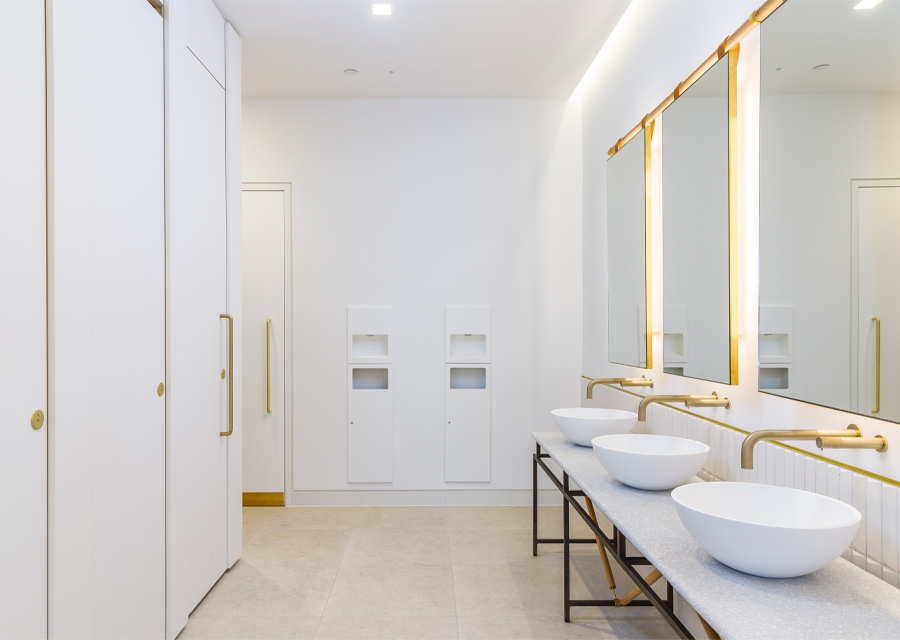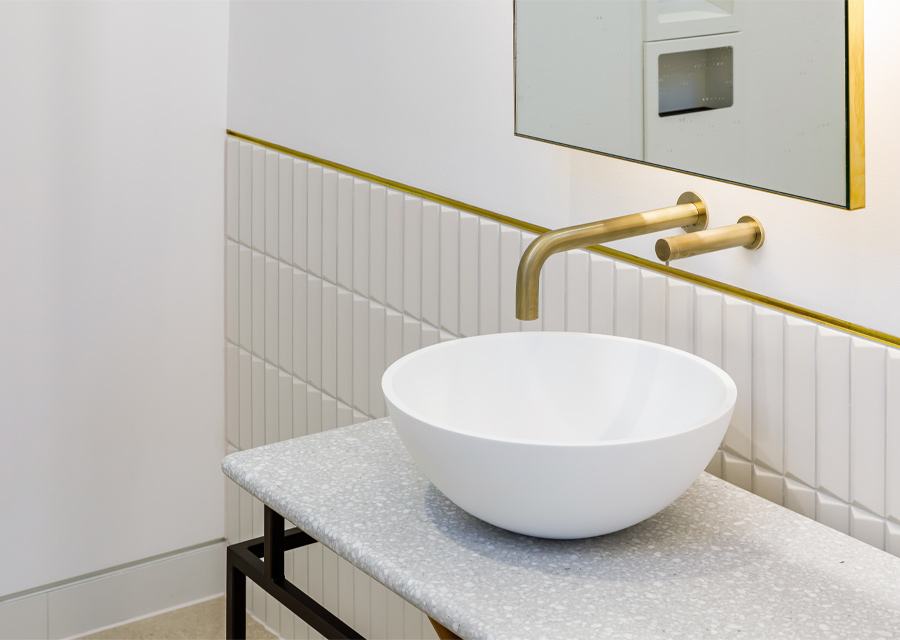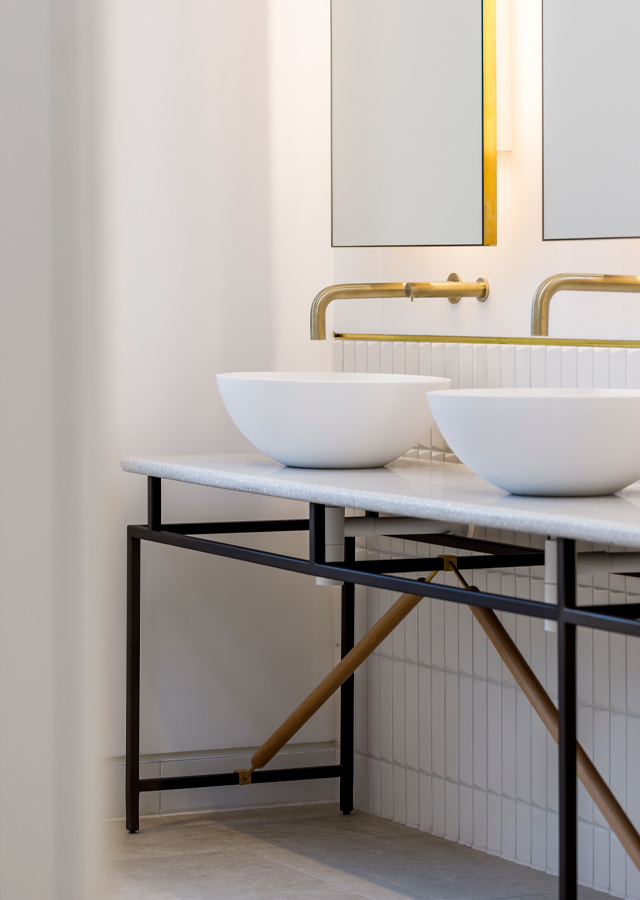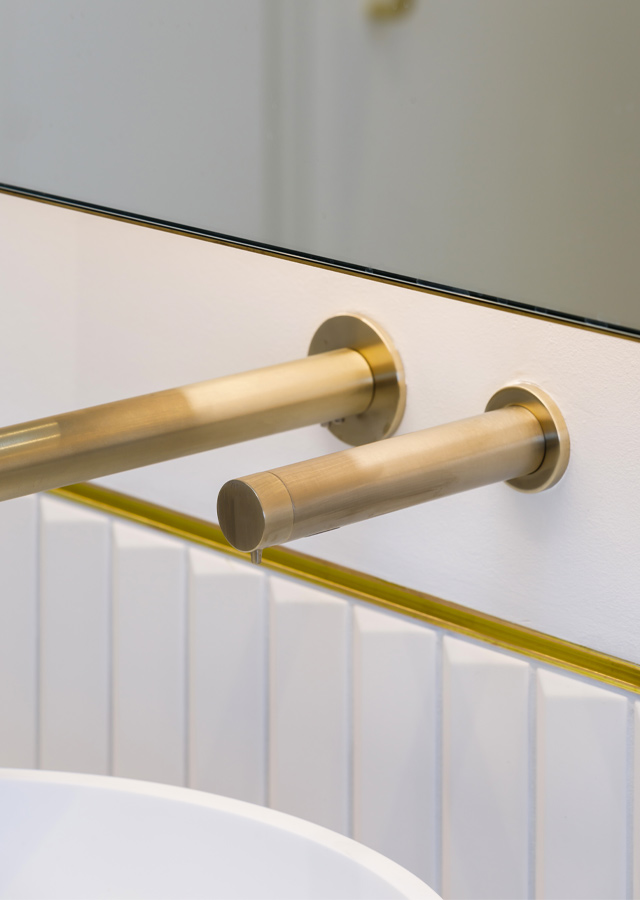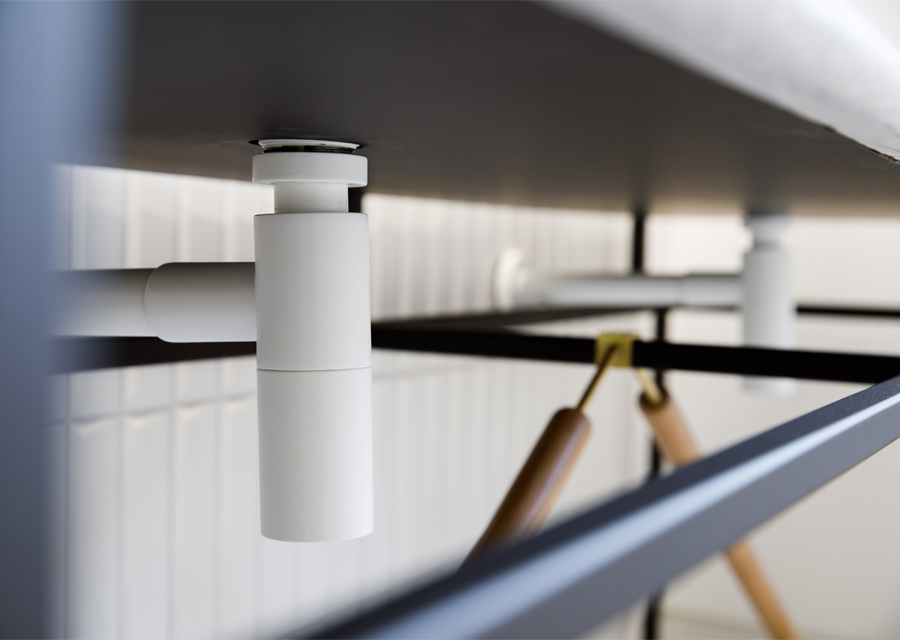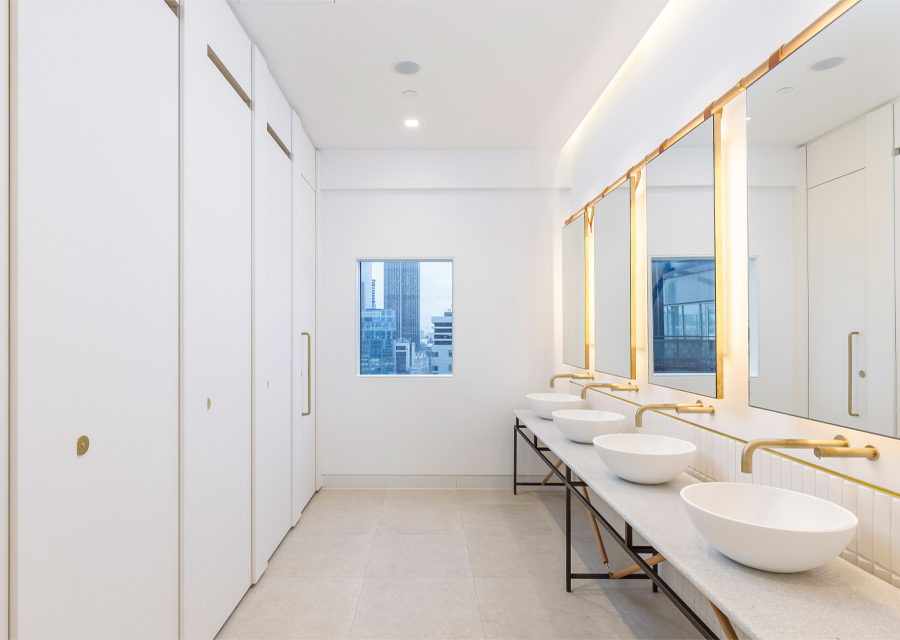The Exchange House is recognised as a building-bridge hybrid for the intricate engineering techniques that have been implemented in its architectural design. It made a name for itself by demonstrating the huge potential of innovation to create sustainable solutions in urban spaces around the world. This is the vision of the world-renowned architectural firm Skidmore, Owings & Merrill (SOM) which built this modern structure.
Exchange House exemplifies the sophisticated fusion of architecture and technology with its form and structure grounded on an exposed steel bridge that spans the 78-meter-long rail yard of the Liverpool Street Station.
The Challenge
This iconic building deserved a distinctive and timeless washroom design which required skill and expertise to match its special reputation. No project comes without its challenges, but with great minds working together the Dolphin team took this on with enthusiasm to achieve yet another successful project.
Working with Piercy and Co., Dolphin envisioned the overall aesthetic design of the washroom to be in sync with the avant-garde architectural style of the building. The concept was to refurbish it with an exposed steel framework that supported the vanity countertop which resonated with the structural arches that formed part of the building’s unique frame.
Carefully selected for this washroom was the DS800 Dolphin Foam Soap Cartridge Multifeed System, however, it was required to be placed in a housekeeping room for the facility staff to maintain or clean with ease. This posed the first challenge as the design also left no room to place the system next to, behind, or below the mirror and vanity due to the customised fittings already chosen for the project.
Whilst observing the building plan between the washroom and housekeeping room, the Dolphin innovation team brainstormed an idea to run the soap pipe under the floating floor across the washroom and up into a wall cavity. This would lead to an access panel where the facility staff could gain access.
Proposal
The proposal was bold, but to settle any doubts the innovations team produced a unique plan which included a full mock-up of the design that was built and tested at Dolphin’s Head Office.
The DS800 required parts of its pipe to be installed through a conduit situated underground leading into a cavity wall so that the multifeed soap system could be accessed via the access panels located behind the mirrors. Two of these cartridge systems had to be installed for every washroom, each feeding one run of panel-mount soap dispensers.
Why use a cartridge system in this application?
Making use of a closed soap system drastically reduces the buildup of bacteria compared to refillable soap containers. Merely opening a refillable soap container introduces germs into the system and during the refilling process, other elements such as dust, water, particles in the air, etc. contaminate the contents being transferred into the container. Bacteria feed off these elements together with the soap and congeal into a substance that eventually causes blockage.
This concern was raised regarding the buildup of congealed soap in the pipework running underneath the floor, but because the soap cartridge is sealed and installed directly into the soap dispensing system, contamination from outside elements is prevented. Each cartridge guarantees a clean, hygienic, sealed hand soap.
In addition, the foam soap cartridges are easier and quicker to change compared to carefully refilling a soap dispenser. It takes an estimated 25 seconds to change a cartridge with the benefit of being a mess-free process.
The single-piece soap pipe running under the floor was protected within a conduit, which meant that the pipe could easily be maintained, cleaned, or replaced if ever necessary. The soap cartridge system complies with WELL Standard requirements giving the client peace of mind that the project was covered from every aspect.
Design Guide
To ensure the proposal was meticulously executed, the Dolphin team joined forces with the project’s installation team to guarantee the following design guidance was followed and implemented:
• The radius of conduit bends must be 150mm or more. The full cavity size should be exploited to create the largest radius of conduit possible.
• The conduit must be fixed and clamped to avoid movement, and all corners require a smooth radius to ensure the pipe can be fed through cleanly. The underground pipe should be straight and fixed before being set in concrete.
• Feeding the pipe through the conduit is tested before concrete or stud walls are constructed to ensure the pipe can be easily fed through from one end.
• The bottom of the DS800 must be above the dispenser and pumps, where the end vent pipe must terminate above the top of the DS800 by at least 100mm. From the access panel onwards, the pipe can have a slight gradient towards the vent pipe to help expel air.
• The use of continuous pipe (no fittings) where the pipe will be inaccessible.
The Result
The Exchange House commercial washroom project was a complete success. The refurbished washroom illustrates how Dolphin innovation can combine design, functionality, and sustainability presented in a simple yet ingenious structural system. This washroom is now an elegant reflection of the building’s unique architectural design and style.
The Innovative Soap Dispensing System The Exchange House
Dolphin Solutions Ltd
View company profile| T | (01424) 202224 |
|---|---|
| F | (01424) 205200 |
| E | info@dolphinsolutions.co.uk |
| W | Visit Dolphin Solutions Ltd's website |
| Southpoint, Compass Park, Bodiam, Robertsbridge, East Sussex, TN32 5BS |


